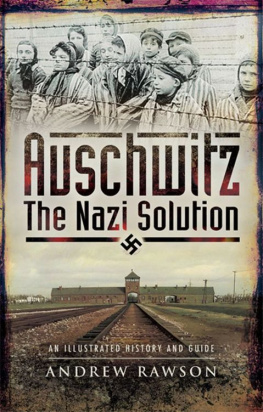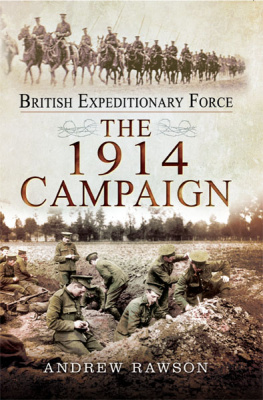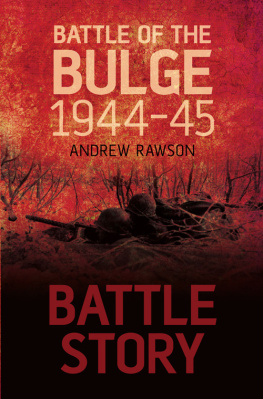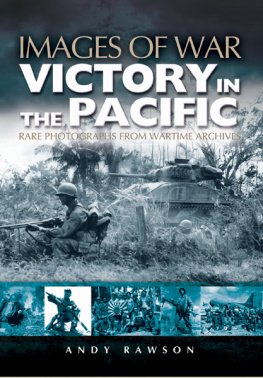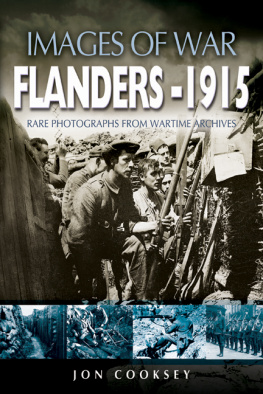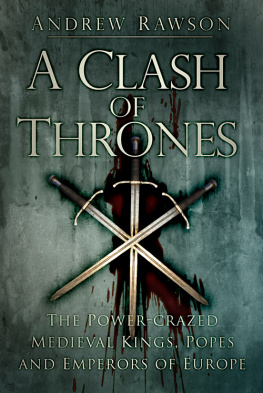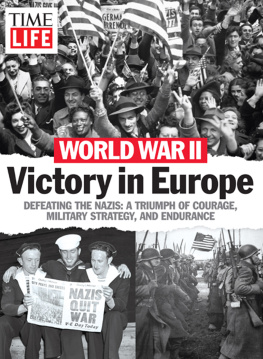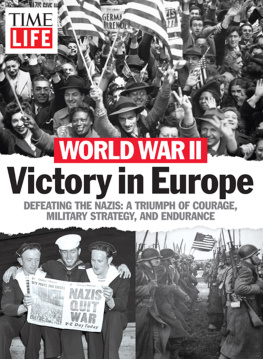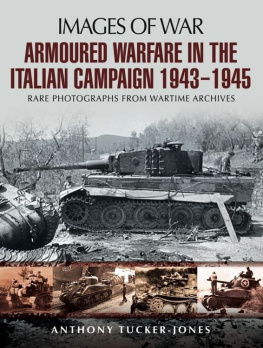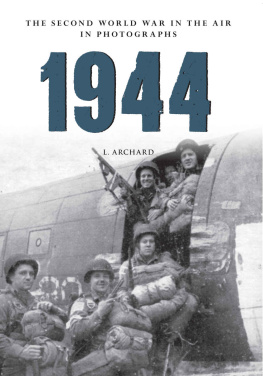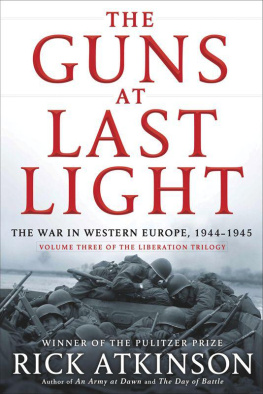

First published in Great Britain in 2005 by
PEN & SWORD MILITARY
an imprint of
Pen & Sword Books Ltd,
47 Church Street, Barnsley,
South Yorkshire.
S70 2AS
Copyright Andrew Rawson, 2005
ISBN 1-84415-274-X
eISBN 978-1-78303-864-0
The right of Andrew Rawson to be identified as Author of this Work has been asserted by him in accordance with the Copyright, Designs and Patents Act 1988.
A CIP catalogue record for this book is available from the British Library
All rights reserved. No part of this book may be reproduced or transmitted in any form or by any means, electronic or mechanical including photocopying, recording or by any information storage and retrieval system, without permission from the Publisher in writing.
Printed and bound in Great Britain by CPI UK
Many of the photographs in this book have been reproduced with kind permission of the United States National Archives. Captions indicate the photograph reference number.
Pen & Sword Books Ltd incorporates the imprints of
Pen & Sword Aviation, Pen & Sword Mari time, Pen & Sword
Military,
Wharncliffe Local History, Pen & Sword Select,
Pen & Sword Military Classics and Leo Cooper.
For a complete list of Pen & Sword titles please contact:
PEN & SWORD BOOKS LIMITED
47 Church Street, Barnsley, South Yorkshire, S70 2AS, England.
E-mail: enquiries@pen-and-sword.co.uk
Website: www.pen-and-sword.co.uk
Contents
Introduction
By January 1945, Allied troops had been in northwest Europe for over six months. After heavy fighting in Normandy, General Eisenhowers Armies had broken out and advanced rapidly to the German border, liberating Paris and Brussels. Another Allied landing in southern France swept up the Rhone Valley, joining the main drive to the German border. However, by the end of September, the advances started to falter, not through enemy action but mounting difficulties in keeping the front line troops supplied. As summer turned to autumn, an attempt to cross the Rhine at Arnhem using airborne troops, codenamed Operation Market Garden, ended in failure and Eisenhower was forced to reconsider his options.
Hard fighting followed as the Germans regrouped and bitter battles for Aachen, the first German city to fall, and Hurtgen Forest consumed men and supplies alike. On 16 December 1944 the Germans struck back with two Panzer Armies in the Ardennes, breaking through the American lines and threatening to reach the River Meuse. For two weeks American reserves poured into Belgium as rearguards fought to hold vital crossroads at St Vith and Bastogne to hold back the German onslaught and by the beginning of January the tide was beginning to turn. The worst was over and as American and British troops squeezed the Bulge out of the Allied line, Eisenhower was planning to strike deep into Germany.
By the beginning of January the Allies had seventy-one divisions ready for action and another fourteen were due to land on the continent over the weeks that followed. Meanwhile, the attack in the Ardennes had consumed a large part of Hitlers reserve. With the Allies poised on the borders in the west and the Russians threatening to carve across eastern Germany it was only a matter of time before Hitlers thousand year Reich came to an end.
Eisenhower had six Armies facing the Germans along a broad front with a vast logistical organisation poised for the final push by the start of the New Year and would start by clearing troops from the Siegfried Line and the west bank of the Rhine. Field Marshal Montgomerys 21 Army Group would then cross the river between Emmerich and Wesel, north of the Ruhr, and drive into northern Germany while General Omar Bradleys 12 Army Group bridged the river between Mainz and Karlsruhe in the south. Having broken Germanys last barrier, the stage would be set for the final drive into the heart of Germany, with the centres of industry, the Ruhr and the Saar basin, the primary objectives.
The end of the war and Victory in Europe was in sight but there was hard fighting ahead. Hitler and the Nazis had motivated the entire German population to fight the invaders and the Allied soldiers would have to fight every inch of the way.
Chapter One
February 1945
Breaking the Siegfried Line
B Y MID-DECEMBER 1944 the Allied Armies were poised to strike into the heart of Germany having endured a gruelling autumn campaign. As Eisenhower considered his next move Hitler struck back in the Ardennes with all the armoured reserves he could muster in what would be known as the Battle of the Bulge. With surprise on their side two Panzer Armies ripped through the thin American line in a few days and threatened to cross the Meuse River and split the Allied line in two. A combination of heroic defensive actions at places such as St Vith and Bastogne and bad weather stalled the German advance long enough to allow the Allies to gather their own reserves and contain Hitlers armour. After two weeks, the crisis had passed and the German troops found themselves on the defensive in a deadly salient. By the end of January the Bulge had been eradicated and once again the Allies were able to plan their campaign to defeat Germany.
With seventy-one divisions available and another fourteen due in the spring, Eisenhowers first objective was to destroy the German forces west of the Rhine. The first strike came in the north in 21 Army Groups sector and on 8 February the First Canadian Army launched Operation VERITABLE. For two weeks General Crerars men endured harsh weather conditions and heavy resistance as they pushed southeast from Nijmegen and the Reichswald Forest towards the Rhine.
21 Army Groups second attack, in Ninth US Armys sector, was scheduled to start at the same time, driving northeast to link up with the Canadians and encircle German forces trapped on the west bank. However, before General Simpsons men could cross the Roer River, a series of dams controlling the flow of water had to be taken. V Corps struck out through the Hurtgen Forest, scene of bitter fighting the previous autumn, on 5 February and five days later seized the key Schwammenauel Dam before German engineers could destroy it. They had, however, damaged valves controlling the flow of water, delaying Simpsons attack until the floodwaters had subsided.
In 12 Army Groups sector General Omar Bradley made limited advances and by the end of February his troops had broken through the Siegfried Line between Pruem and Saarburg and he was ready to make his own drive to the Rhine. On the southern end of the Allied line General Jacob Devers 6 Army Group concentrated on straightening the line and by 9 February the Seventh US Army and the First French Army had cleared the German salient known as the Colmar Pocket and were ready to advance towards the Rhine.
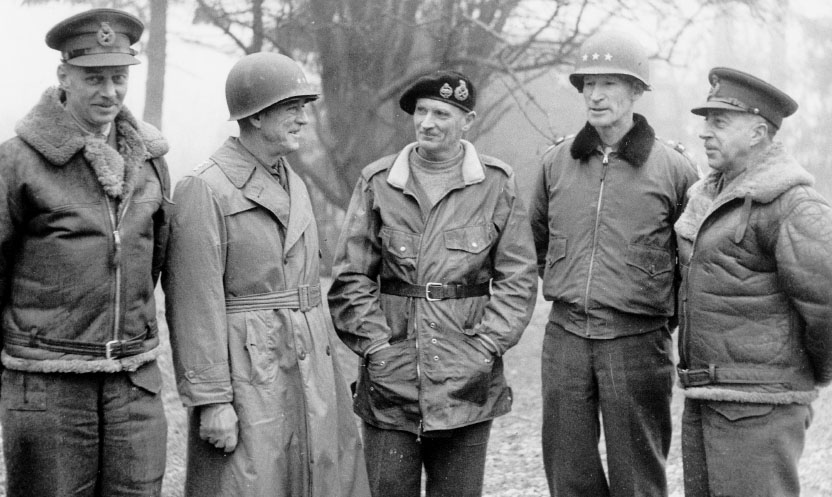
Field Marshal Montgomery discusses the forthcoming battles with his American allies.
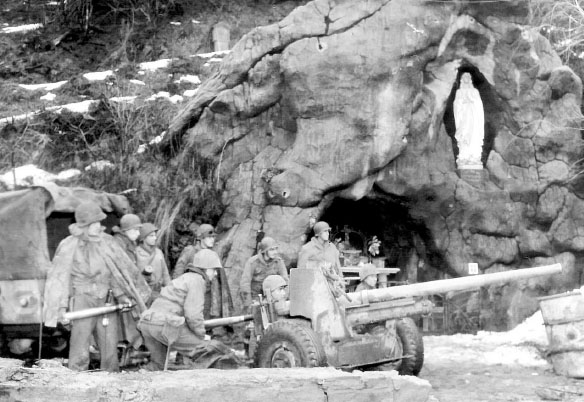
After reducing the Bulge in the American line, General Bradley continued his offensive in the hope of pushing the Germans back towards the Kyll River. This antitank crew of 345th Regiment have set up their weapon alongside a wayside shrine in Schonberg, Belgium during 87th Divisions attack on Neuendorf.
Next page


